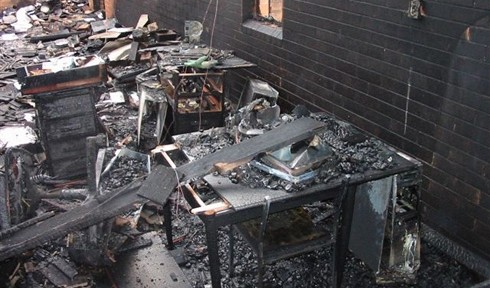The findings show that many small businesses do not understand the importance of disaster preparedness. Half of those questioned do not have a plan in place. Forty-one percent said that it never occurred to them to put together a plan and 40 percent stated that disaster preparedness is not a priority for them.
This lack of preparation is surprising given the risks. Sixty-five percent of respondents live in regions susceptible to natural disasters. In the past 12 months, the typical SME experienced 6 computer outages, with the leading causes being cyberattacks, power outages or natural disasters.
The survey revealed that the information that drives most small- and mid-sized businesses is simply not protected. Less than half back up their data weekly or more frequently and only 23 percent back up daily.
Respondents also reported that a disaster would cause information loss. Nearly half said they would lose at least 40 percent of their data in the event of a disaster.
Don’t Act Until After a Disaster
According to the survey findings, half of those questioned have implemented disaster preparedness plans did so after experiencing an outage and/or data loss. Fifty-two percent put together their plans within the last six months. However, only 28 percent have actually tested their recovery plans, which is a critical component of actually being prepared for a potential disaster.
Lack of Preparedness Impacts the Business
Disasters can have a significant financial impact on SMBs. The median cost of downtime for an SMB is £78,000 per day.
Outages cause customers to leave—54 percent of small business customer respondents reported they have switched vendors due to unreliable computing systems, a 12 percent increase compared with last year’s survey.
This downtime can also put them out of business. Also, forty-four percent of the customers surveyed stated that their suppliers have temporarily shut down due to a disaster.
Being Prepared
- Don’t wait until it’s too late: It is critical for businesses to not wait until after a disaster to think about what they should have done to protect their information. Not only is downtime costly from a financial perspective, but it could mean the complete demise of the business. You can’t wait until it is too late, and need to begin mapping out a disaster preparedness plan today. A plan should include identification of key systems and data that is intrinsic to the running of the business. Basically, identify your critical resources.
- Protect information completely: To reduce the risk of losing critical business information, you must implement the appropriate security and backup solutions to archive important files, such as customer records and financial information. Natural disasters, power outages and cyberattacks can all result in data and financial loss, you need to make sure important files are saved not only on an external hard drive and/or company network, but in a safe, off-site location.
- Get employees involved: Employees play a key role in helping to prevent downtime, and should be educated on computer security best practices and what to do if information is accidentally deleted or cannot easily be found in their files. Since small businesses have few resources, all employees should know how to retrieve the businesses’ information in times of disaster.
- Test frequently: After a disaster hits is the worst time to learn that critical files were not backed up as planned. Regular disaster recovery testing is invaluable. Test your plan anytime anything changes in your environment.
- Review your plan: If frequent testing is not feasible due to resources and bandwidth, SMBs should at least review their disaster preparedness plan on a quarterly basis.


